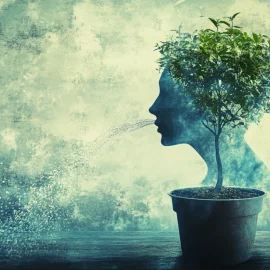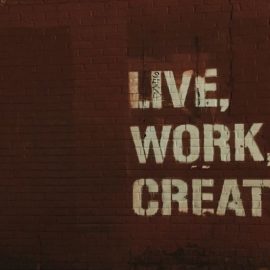

This article is an excerpt from the Shortform summary of "White Fragility" by Robin J. DiAngelo. Shortform has the world's best summaries of books you should be reading.
Like this article? Sign up for a free trial here .
What is whiteness? How does your life more privileged in America if you’re white?
Whiteness is the quality of being white. The laws and systems of the United States are set up to protect whiteness and confer advantages based on it.
Read on to understand the whiteness definition and the impact of being white in America.
Whiteness Definition
After the founding of the United States, these ideas became further encoded into the nation’s legal system, with an entire set of laws emerging to protect the institution of slavery. Even after the abolition of slavery, whiteness became an essential qualification for full participation in American life. So, what is whiteness?
When new immigrants came to America in the 19th and 20th centuries, the judicial system rendered judgments on which groups could and couldn’t be classified as white. By conferring specific advantages and benefits upon whiteness, American society transformed race into more than an identity—it became an interest, one that white people would jealously guard and protect.
Eventually, immigrant groups that once faced discrimination—like Irish- or Italian-Americans—were able to assimilate into white society by becoming more generically “American” and shedding their unique cultural or national identities. Implicit in this ability to assimilate, of course, was the idea that whiteness was the key component of American identity. Other forms of identity such as language or religion could be integrated. But this path was never open to black people, regardless of how long their ancestors may have been in the country, because, unlike the Irish and Italians, they couldn’t “pass” as white. Race was an immutable characteristic.
It is important to remember that the social construction of race preceded racism—indeed, it was essential to it. Our notions of race are inextricably linked to centuries worth of ideas and practices about who should and should not wield power in society.
Prejudice vs. Racism
Understanding this link between race and power is crucial to understanding the true nature of racism. To illustrate this, it’s useful to explore the differences between prejudice and racism. Prejudice is when you have an opinion about a large group of people based on some shared characteristic and then use that generalization to evaluate individual members of that group. And because none of us are objective and are all products of the larger forces that shape our society, we all have prejudicial beliefs and ideas of one kind or another.
For example, you might harbor the (incorrect) belief that people of East Asian descent have a natural aptitude for mathematics. You then assume that individuals of East Asian descent whom you meet must be math whizzes, based solely on their membership in that group.
Discrimination is when you act on prejudiced beliefs. It can range from exclusion to verbal abuse to outright violence. If you believe that black men are somehow hardwired to commit violent crime, you might refuse to hire them or instinctively cross the street when you encounter them.
Institutions Show Preference for Whiteness
But racism is a very different phenomenon, despite superficial similarities to simple prejudice.
Racism is defined by power and control of key institutions within a society. Thus (in the context of American history), slavery, Jim Crow, and discriminatory housing policies are just some of the functions of racism. They were products of white control over the political, legal, and economic apparatus of the country.
People of color can be prejudiced toward white people and can even discriminate against individual white people; but because, as a group, they have historically been (and remain) locked out of dominant positions within the nation’s power structure, by definition they cannot be racist. In other words, a group needs power within a society to even be capable of racism. Thus, “reverse racism,” the alleged oppression of whites at the hands of black people, is a contradiction of terms. Racism cannot be “reverse”—it can only go in one direction.
A black real estate agent might act on her prejudice and discriminate against an individual white person by refusing to help them buy a home; but black people have no ability to pass laws mandating which neighborhoods white people as a group are and aren’t allowed to live in.
The Pervasiveness of White Supremacy
Because white people have always been dominant in society, they have not had to confront the consequences or even the existence of their enormous privileges. This is largely because white supremacy encodes as the whiteness definition, being white as the norm or standard condition for society. This pervades everything from language to how we view our nation’s history.
The “Americanness” of people of color, for example, is always qualified as “African-American,” “Asian-American,” or “Latin American.” Rarely are white people called “White-American” or “Caucasian-American.” But, what is whiteness? It is assumed to be standard, normal, and synonymous with American identity itself.
Similarly, February is designated as Black History Month. Implicit in this labeling is the idea that “black” history stands somehow apart from American history in general. There does not need to be a corresponding White History Month, because the culture automatically assumes that such a designation would be redundant—in a white-dominated society, white history is simply the same as “history.”
This placement of white people atop the nation’s hierarchy and the enshrinement of whiteness as the embodiment of national identity is what scholars of race mean by white supremacy. Many white people recoil at the term and refuse to consider the idea that they bear responsibility for it because they associate it with extremist groups like the KKK or neo-Nazis.
But even a cursory look at America’s most powerful institutions shows just how embedded white supremacy is.
- The ten richest Americans are 100 percent white
- Congress is 90 percent white
- Directors of the 100 top-grossing films of all time are 95 percent white
Although this is just a snapshot, it demonstrates how whiteness pervades and dominates American economic, political, and cultural life. Seeing the overwhelming whiteness of America’s elite (not to mention the dominance of white figures like Washington, Madison, Jefferson, Lincoln, and FDR discussed in history books) sends a powerful signal to children, even at an early age.
White children grow up with a profound sense of belonging, regardless of where they go or what other personal attributes they might have. There is no physical or social space in which they are ever made to feel that their presence would be unnatural or unwelcome. Children of color (especially African-Americans), by contrast, grow up feeling constantly apart from or “othered” by society, no matter how far up the social or economic scale they might personally ascend as individuals.

———End of Preview———
Like what you just read? Read the rest of the world's best summary of Robin J. DiAngelo's "White Fragility" at Shortform .
Here's what you'll find in our full White Fragility summary :
- Why white people become defensive when confronted with the idea of racism
- How today's racial hiearchy began in roots centuries ago
- How we as society can gradually overcome our deep racial divides






